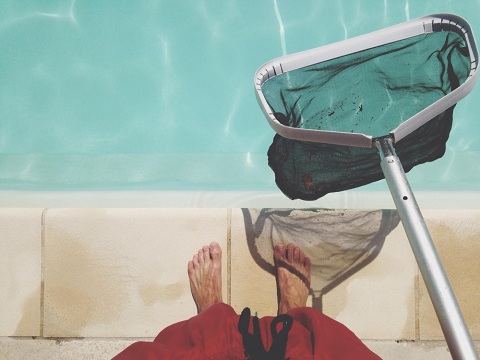Maintaining a pristine, safe swimming pool requires the proper use of chemicals, and one of the most essential is liquid chlorine. Understanding how to add liquid chlorine safely to your pool is crucial for ensuring effective sanitation and the safety of all swimmers. In this comprehensive guide, we will walk you through the steps to correctly add liquid chlorine, from understanding its benefits to implementing best practices for pool maintenance.
Understanding Liquid Chlorine
Liquid chlorine, also known as sodium hypochlorite, is a powerful sanitizer that helps keep pool water free from harmful bacteria and algae. Unlike other forms of chlorine, liquid chlorine is fast-acting and easy to apply, making it a popular choice among pool owners.
Benefits of Using Liquid Chlorine
- Fast Dissolution: Liquid chlorine quickly dissolves in water, ensuring immediate sanitation.
- High Efficiency: It provides a rapid increase in chlorine levels, which is essential for shock treatments.
- Ease of Use: Liquid form eliminates the need for pre-dissolution, making it user-friendly.
Preparation Before Adding Liquid Chlorine
Before adding liquid chlorine to your pool, several preparatory steps are necessary to ensure safety and effectiveness.
1. Test the Water
Testing the water is a critical first step. Use a reliable test kit to measure the current chlorine levels, pH, alkalinity, and calcium hardness. The ideal chlorine level should be between 1-3 ppm (parts per million).
2. Balance the Pool Chemistry
Ensuring your pool chemistry is balanced is vital for the chlorine to work effectively. Adjust the pH to be between 7.2 and 7.6. Proper alkalinity levels (80-120 ppm) and calcium hardness (200-400 ppm) also help maintain optimal water quality.
3. Calculate the Amount of Liquid Chlorine Needed
Determine the volume of your pool to calculate the appropriate amount of liquid chlorine needed. Generally, one gallon of liquid chlorine (with a concentration of 10-12%) will raise the chlorine level by 10 ppm per 10,000 gallons of water.
4. Wear Protective Gear
Handling chemicals requires safety precautions. Always wear protective gloves and eyewear to prevent skin and eye contact.
How to Safely Add Liquid Chlorine
Once the preparatory steps are complete, follow these detailed steps to safely add liquid chlorine to your pool:
1. Choose the Right Time
Add chlorine in the evening or at night. UV rays from the sun can degrade chlorine, reducing its effectiveness. Evening application ensures that the chlorine can work overnight without interference from sunlight.
2. Turn On the Pool Pump
Running the pool pump ensures that the liquid chlorine disperses evenly throughout the pool. Turn on the pump and let it circulate the water for at least an hour before adding the chlorine.
3. Pour the Liquid Chlorine
Stand at the deep end of the pool and slowly pour the liquid chlorine into the water, moving around the pool to distribute it evenly. Pour the chlorine near the return jets if possible, to help with even distribution.
4. Allow the Pump to Run
Keep the pool pump running for at least 4-6 hours after adding the chlorine. This ensures that the chemical is thoroughly mixed and distributed throughout the pool.
5. Re-Test the Water
After the pump has run for several hours, re-test the water to ensure that the chlorine levels are within the ideal range. Adjust as necessary based on the test results.
Maintaining Pool Chlorine Levels
Regular maintenance is essential to keep your pool safe and clean. Here are some tips for maintaining optimal chlorine levels:
1. Regular Testing
Test your pool water at least twice a week. Frequent testing helps you keep track of chlorine levels and other important chemical balances.
2. Routine Shock Treatments
Shock your pool regularly, especially after heavy use or significant rainfall. Shock treatments involve adding a higher dose of chlorine to the pool to eliminate contaminants and reset chlorine levels.
3. Consistent Chlorine Addition
Add chlorine as needed based on your regular testing results. Consistent maintenance prevents the chlorine levels from dropping too low, which can lead to algae growth and bacterial contamination.
4. Clean the Pool Regularly
Regularly clean your pool to remove debris and contaminants. Skim the surface daily, vacuum the pool weekly, and brush the walls and floor to prevent algae buildup.
5. Monitor and Adjust pH Levels
Maintaining the pH within the recommended range (7.2-7.6) is essential for the effectiveness of chlorine. Use pH increasers or decreasers as needed to keep the pH balanced.
Troubleshooting Common Issues

Even with the best practices, you may encounter issues with your pool’s chlorine levels. Here are some common problems and solutions:
1. Chlorine Lock
Chlorine lock occurs when the chlorine is not effective due to high levels of stabilizer (cyanuric acid) or contaminants. To resolve this, perform a partial water drain and refill, then shock the pool.
2. High Chlorine Demand
If your pool requires an unusually high amount of chlorine, it may be due to organic contaminants or algae. Shock the pool and clean thoroughly to restore balance.
3. Cloudy Water
Cloudy water can result from poor filtration or imbalanced chemicals. Check the filter, clean it if necessary, and balance the pool chemistry.
4. Strong Chlorine Odor
A strong chlorine smell is often a sign of chloramines, which form when chlorine combines with contaminants. Shock the pool to eliminate chloramines and restore proper chlorine levels.
Conclusion
Adding liquid chlorine to your pool is a straightforward process, but it requires careful attention to detail and regular maintenance. By following the steps outlined in this guide, you can ensure that your pool remains clean, safe, and enjoyable for all swimmers. Remember, consistent monitoring and adjustment of your pool’s chemical levels are key to maintaining a healthy swimming environment.

